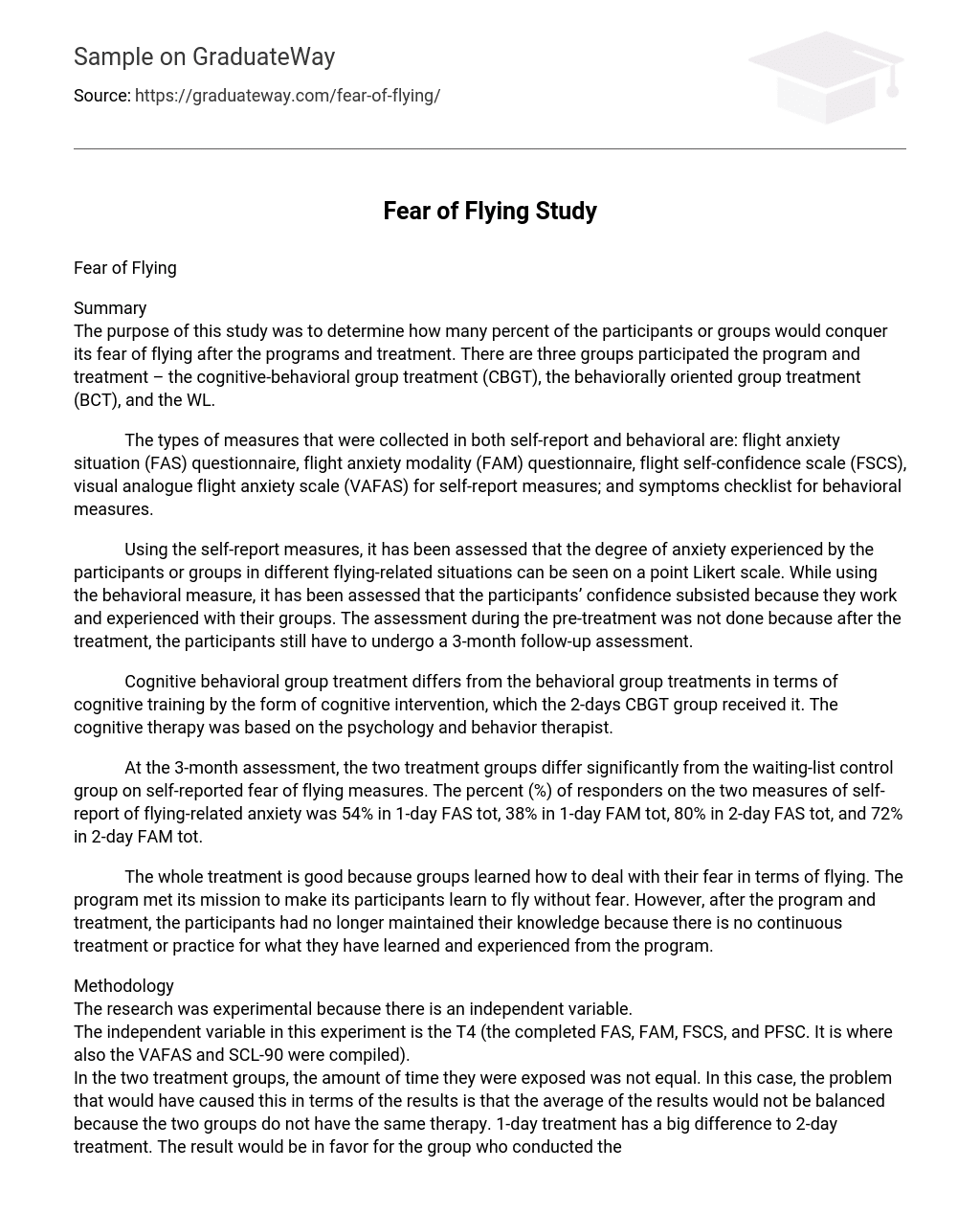Fear of Flying
Summary
The purpose of this study was to determine how many percent of the participants or groups would conquer its fear of flying after the programs and treatment. There are three groups participated the program and treatment – the cognitive-behavioral group treatment (CBGT), the behaviorally oriented group treatment (BCT), and the WL.
The types of measures that were collected in both self-report and behavioral are: flight anxiety situation (FAS) questionnaire, flight anxiety modality (FAM) questionnaire, flight self-confidence scale (FSCS), visual analogue flight anxiety scale (VAFAS) for self-report measures; and symptoms checklist for behavioral measures.
Using the self-report measures, it has been assessed that the degree of anxiety experienced by the participants or groups in different flying-related situations can be seen on a point Likert scale. While using the behavioral measure, it has been assessed that the participants’ confidence subsisted because they work and experienced with their groups. The assessment during the pre-treatment was not done because after the treatment, the participants still have to undergo a 3-month follow-up assessment.
Cognitive behavioral group treatment differs from the behavioral group treatments in terms of cognitive training by the form of cognitive intervention, which the 2-days CBGT group received it. The cognitive therapy was based on the psychology and behavior therapist.
At the 3-month assessment, the two treatment groups differ significantly from the waiting-list control group on self-reported fear of flying measures. The percent (%) of responders on the two measures of self-report of flying-related anxiety was 54% in 1-day FAS tot, 38% in 1-day FAM tot, 80% in 2-day FAS tot, and 72% in 2-day FAM tot.
The whole treatment is good because groups learned how to deal with their fear in terms of flying. The program met its mission to make its participants learn to fly without fear. However, after the program and treatment, the participants had no longer maintained their knowledge because there is no continuous treatment or practice for what they have learned and experienced from the program.
Methodology
The research was experimental because there is an independent variable.
The independent variable in this experiment is the T4 (the completed FAS, FAM, FSCS, and PFSC. It is where also the VAFAS and SCL-90 were compiled).
In the two treatment groups, the amount of time they were exposed was not equal. In this case, the problem that would have caused this in terms of the results is that the average of the results would not be balanced because the two groups do not have the same therapy. 1-day treatment has a big difference to 2-day treatment. The result would be in favor for the group who conducted the 2-day treatment because the focus for the participants is longer and the therapy would become better than the 1-day treatment therapy.
I like the way the study was conducted because this study incorporated from the previous study about fear of flying. The data and facts that have been gathered were all based on the research and treatment conducted. I can say that this study is complete in terms of its introduction of the research, the problem that should be treated, the participants who joined the treatment, the methods and measures conducted, and the analysis of the findings after the whole treatment until they come up into a conclusion, which has a basis of facts, details, and data from the process of treatment.





